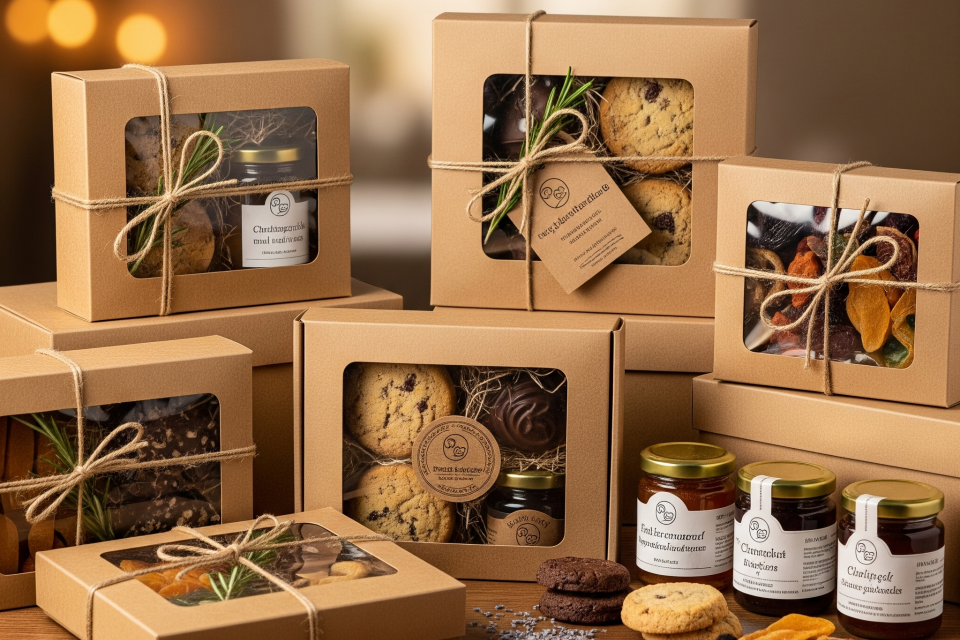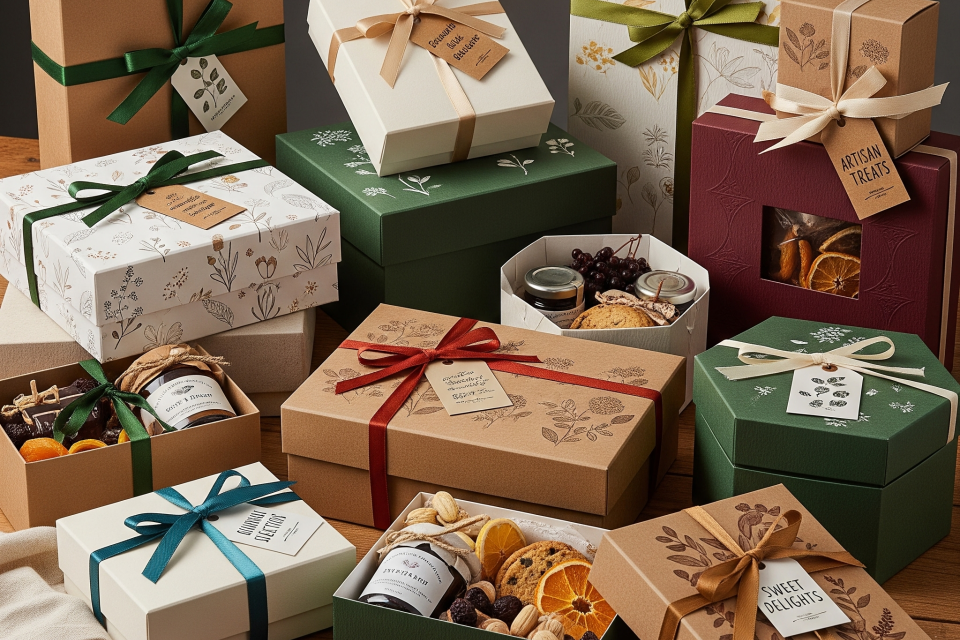Top Food Packaging Trends
Top Food Packaging Trends
Summary
Top Food Packaging Trends encompass the evolving practices and innovations within the food packaging industry aimed at enhancing sustainability, consumer engagement, and product safety. As environmental concerns intensify, both manufacturers and consumers are increasingly prioritizing sustainable packaging solutions, leading to significant shifts in material selection and packaging design. This trend is notable not only for its impact on the environment but also for how it shapes consumer purchasing decisions, with studies showing that a substantial majority of consumers prefer products with eco-friendly packaging.
The focus on sustainability in food packaging involves various strategies, including Life Cycle Assessment (LCA) to evaluate the environmental impact of materials from production to disposal. Innovations such as bioplastics and eco-friendly coatings are gaining traction, offering alternatives to traditional plastics that reduce waste and emissions. Moreover, recyclability and biodegradability have emerged as key attributes consumers seek, as they play a crucial role in reducing landfill waste and conserving resources. As regulatory frameworks worldwide begin to mandate more sustainable practices, companies are adapting to these changes to align with consumer expectations and enhance their market positioning.
Technological advancements are also shaping the landscape of food packaging, with smart packaging technologies allowing for real-time tracking, enhanced product safety, and improved consumer interaction. Features such as QR codes and sensors facilitate transparency and engagement, ensuring that consumers have access to vital information regarding product freshness and sourcing. This convergence of sustainability and technology highlights a growing trend toward personalized and interactive packaging experiences that resonate with modern consumer preferences.
Amid these transformations, challenges remain, particularly regarding consumer trust in sustainability claims and the complexity of recycling systems. Brands face scrutiny over greenwashing, prompting the need for clear and credible communication of their sustainability efforts. As the food packaging industry continues to evolve, balancing environmental responsibilities with consumer demands will be critical for companies aiming to thrive in a competitive market.

Sustainability
Sustainability in food packaging has become a crucial focus for both manufacturers and consumers, driven by increasing awareness of environmental issues and the need for more responsible resource management. The concept of sustainability encompasses actions aimed at creating a healthier planet for future generations, including efforts to reduce waste and emissions, protect natural resources, and promote long-term ecological stability.
Life Cycle Assessment (LCA)
One of the most effective methods for evaluating the sustainability of packaging materials is Life Cycle Assessment (LCA), which analyzes every stage of the packaging process—from material development to transportation and disposal. This comprehensive assessment requires advanced calculations and insights from multiple disciplines, allowing businesses to identify the most sustainable options available. The adoption of LCA can help companies make informed decisions that align with sustainability goals.
Recyclability and Biodegradability
Recyclability and biodegradability are key components of sustainable packaging. Recyclability refers to the capacity of packaging materials to be collected, sorted, and processed into new products, thereby reducing waste sent to landfills and conserving natural resources. On the other hand, biodegradability denotes the ability of a material to break down naturally over time through the action of living organisms. Different materials exhibit varying levels of recyclability and biodegradability, making careful selection essential for achieving sustainability in packaging practices.
Innovations in Sustainable Packaging
Recent advancements in sustainable packaging have introduced innovative materials and designs. For instance, plant-based plastics, also known as bioplastics, are produced from renewable resources like corn and sugarcane. These alternatives not only reduce carbon emissions during production but are also often biodegradable or compostable, making them suitable for applications such as food packaging. Additionally, eco-friendly packaging options like water-based coatings and biodegradable materials made from natural substances are gaining traction as viable replacements for traditional plastics.
End-of-Life Considerations
Designing packaging with sustainability in mind also involves end-of-life considerations, ensuring that products can be effectively sorted and recycled by consumers. As the demand for recyclable and sustainable packaging rises, manufacturers are adopting simpler designs that facilitate easier recycling processes. For example, using all-plastic components instead of mixed materials can significantly enhance recyclability and reduce the environmental impact of packaging waste.
Technological Innovations
The food packaging industry is undergoing a significant transformation driven by technological advancements aimed at enhancing product safety, consumer engagement, and sustainability. These innovations not only improve the efficiency of packaging processes but also address the growing demand for transparency and environmental responsibility among consumers.
Smart Packaging
Smart packaging is at the forefront of technological innovations in food packaging. This category encompasses various technologies, such as QR codes, sensors, and RFID tags, which allow consumers to interact with packaging beyond the traditional use of opening it to access the product. For example, QR codes can lead consumers to detailed information about the product, including sourcing and nutritional details, enhancing the customer experience and fostering brand loyalty. Additionally, sensors integrated into packaging can monitor food conditions, such as pH levels and temperature, ensuring optimal freshness and safety. The ability of smart packaging to provide real-time updates on food quality significantly reduces waste and enhances customer satisfaction by assuring product integrity.
Internet of Packaging
The concept of the Internet of Packaging is gaining traction, allowing for real-time tracking of food products during transport and storage. This technology provides vital data about temperature, humidity, and location, which is critical for ensuring that perishable goods maintain their quality throughout the supply chain. By incorporating smart technologies, brands can optimize their logistics, reduce food waste, and improve overall supply chain efficiency.
Personalized and Interactive Packaging
Another trend is the rise of personalized packaging, which tailors products to individual consumer preferences. This can include customized messages or designs that resonate with specific target audiences, enhancing brand engagement. Interactive packaging further elevates consumer interaction by offering games, tutorials, or exclusive content accessible through mobile devices, effectively bridging the gap between the physical product and digital engagement.
Advances in Materials
Technological innovations are also reflected in the development of new packaging materials that align with sustainability goals. Companies are increasingly exploring alternatives to traditional plastics, such as bioplastics made from renewable resources like sugarcane and cornstarch, which can be compostable or biodegradable. The implementation of these advanced materials not only helps to minimize waste but also enhances barrier properties, thereby prolonging shelf life and reducing food spoilage.

Consumer Preferences
Consumer preferences in food packaging are increasingly shaped by sustainability concerns and the demand for eco-friendly solutions. Recent studies indicate that a significant majority of consumers prioritize sustainable packaging, with 90% of individuals more likely to purchase from brands that utilize such materials. Additionally, 54% of consumers report actively seeking out products with sustainable packaging options, reflecting a broader shift towards environmentally conscious purchasing behaviors.
Health and Safety Concerns
Beyond sustainability, consumers also prioritize hygiene and food safety in their packaging preferences. The growing awareness of foodborne illnesses and contamination issues has made packaging integrity paramount. As such, packaging that safeguards product quality while also being sustainable is becoming a key requirement. For instance, innovations such as high-barrier packaging and antimicrobial films are increasingly favored as they ensure food safety while aligning with eco-friendly values.
Influence on Purchasing Decisions
The willingness to pay a premium for eco-friendly packaging is noteworthy, with 73% of consumers expressing readiness to alter their purchasing habits to minimize their environmental impact. Research shows that 81% of consumers believe companies should play a role in improving environmental conditions, emphasizing the intersection between consumer expectations and corporate responsibility. This trend indicates that eco-friendly packaging not only influences individual purchasing decisions but also drives brand loyalty among environmentally conscious consumers.
Transparency and Trust
Transparency in packaging claims is another crucial factor shaping consumer preferences. Many consumers express skepticism about environmental claims made by brands, with 88% of Generation Z indicating a lack of trust in corporate sustainability efforts. This concern extends to labeling, as nearly half of consumers find sustainability labels confusing, which complicates their purchasing decisions. Brands that provide clear and credible information regarding their sustainability practices and packaging materials can build trust and foster consumer loyalty.
Regulatory Changes
As concerns regarding environmental sustainability escalate, regulatory changes around the globe are reshaping the food packaging landscape. These changes aim to reduce the ecological impact of packaging materials and promote sustainable practices within the industry. Various governmental policies focus on enhancing recyclability, reducing waste, and incentivizing the use of renewable resources in packaging materials.
Overview of Sustainable Packaging Regulations
Regulations concerning sustainable packaging emphasize resource conservation, recyclability, and the use of low-carbon materials. These initiatives are designed to minimize carbon footprints and promote the circular economy by encouraging businesses to adopt eco-friendly materials such as bioplastics, which are derived from renewable plant sources. Compliance with these regulations not only helps avoid fines but also enhances brand reputation and opens up opportunities for sustainable financing.
Impact of Legislative Frameworks
Significant legislative efforts, such as the European Union's Packaging and Packaging Waste Regulation (PPWR) and the United Nations Global Plastic Treaty, have introduced binding conditions that drive innovation in packaging design and materials. These frameworks aim to set ambitious recycling targets and waste reduction goals, pushing companies toward more sustainable practices in how products are packaged and distributed.
Country-Specific Regulations
Sustainable packaging regulations vary widely across countries, affecting how exporters choose their packaging materials. Countries may impose specific requirements, such as limitations on single-use plastics or mandates for using recyclable materials, thereby influencing global supply chains and necessitating compliance for businesses aiming to operate internationally.
Compliance and Certification
To align with these evolving regulations, businesses must adhere to environmental standards and obtain necessary certifications, such as those from the Forest Stewardship Council (FSC) or the Biodegradable Products Institute (BPI). These certifications demonstrate a company's commitment to sustainability and help in meeting the high environmental standards set by major retailers and brands, including Unilever and Nestlé.
Consumer Awareness and Market Dynamics
As consumer awareness regarding sustainability increases, packaging companies are compelled to respond by enhancing their sustainability measures. Research indicates that a significant percentage of consumers prioritize recyclable packaging, with 78% of U.S. consumers actively seeking recycling information on product labels. This trend underscores the importance of regulatory compliance as a marketing strategy that can directly influence purchasing decisions and brand loyalty.

Case Studies
Overview of Sustainable Packaging Initiatives
The food packaging industry is witnessing a significant transformation as businesses strive to meet the increasing demand for sustainable solutions. Companies are not only responding to consumer preferences but also addressing environmental challenges associated with traditional packaging methods. This section highlights notable case studies that exemplify successful strategies in sustainable packaging, showcasing how various brands have navigated challenges and redefined their operations.
Eco-Friendly Eats
One illustrative example is Eco-Friendly Eats, a food delivery service that has integrated sustainability into its business model. The company's commitment to environmental responsibility serves as a competitive advantage, allowing it to differentiate itself in a crowded market. This case study analyzes Eco-Friendly Eats' sustainability initiatives and the effectiveness of its strategies, encouraging a critical evaluation of how similar practices can be adopted across various industries. It emphasizes the importance of aligning business objectives with consumer demands for eco-friendly products and services, promoting broader implications for sustainability in the food delivery sector and beyond.
Bernbacher Pasta
Another compelling case is Bernbacher, a leading German pasta manufacturer that faced the challenge of transitioning to sustainable packaging. In 2018, the company initiated a switch from plastic to paper packaging, working closely with ROVEMA Life Cycle Services to adapt its existing machinery to accommodate renewable film materials. Despite encountering hurdles during the conversion process, Bernbacher successfully reduced its environmental impact by minimizing plastic waste, illustrating the potential for traditional industries to embrace sustainable practices while meeting customer expectations for eco-friendly packaging.
Mondi Group and Noel Alimentaria
In a collaborative effort, Mondi Group and Noel Alimentaria introduced an innovative paper-based food tray designed for plant-based and meat products. This partnership exemplifies the integration of sustainability into product design, resulting in a tray made from renewable and responsibly sourced materials. The project reflects a commitment to both sustainability and product integrity, catering to the evolving preferences of consumers seeking eco-conscious options in food packaging.
Smurfit Kappa Innovations
Smurfit Kappa has made significant strides in developing sustainable packaging solutions, highlighted by their introduction of the Vitop® Uno tap, designed for Bag-in-Box® products. This innovation addresses environmental concerns by ensuring that tamper protection remains part of the tap without contributing to plastic waste. Additionally, Smurfit Kappa's creation of the Fresh Post food box, utilizing their patented Twin Kraft Solid Board, showcases a commitment to recyclable materials that maintain food safety while addressing the need for sustainable packaging in the fast-food sector.
Future Outlook
The food packaging industry is poised for significant transformations in 2023, influenced by evolving consumer preferences and ongoing global challenges. As businesses navigate economic uncertainties, there is an expectation of fluctuating consumer demand and intensified competition, prompting companies to rethink their packaging strategies.
Sustainability as a Core Priority
Sustainability remains at the forefront of packaging trends, as consumers increasingly prioritize eco-friendly practices. A growing number of consumers are willing to pay a premium for products that reflect their commitment to sustainability, which encompasses reducing food waste and supporting brands that engage in environmentally responsible packaging solutions. Major corporations are setting ambitious sustainability goals, such as transitioning to 100% recyclable or compostable packaging, further reflecting the industry's shift towards more responsible practices.
Innovations in Sustainable Packaging
Innovations in materials science are enhancing the feasibility and appeal of sustainable packaging options. The development of biodegradable materials and eco-design principles allows companies to create packaging that minimizes environmental impact while maintaining product integrity. Businesses are now exploring sustainable practices at multiple levels—raw materials, production efficiency, and packaging design—which are essential for long-term success in a market increasingly focused on sustainability.
Technological Advancements and Smart Packaging
Technological advancements are also reshaping the packaging landscape. The rise of smart packaging, characterized by features such as security, connectivity, and authentication, is becoming a prominent trend. These innovations not only enhance the consumer experience but also provide brands with valuable data insights, allowing for more informed decision-making and improved supply chain management.
Consumer Engagement and Experience
As consumer expectations evolve, there is a notable trend towards “revenge spending,” where individuals seek enjoyable and affordable experiences, even during economic downturns. Brands can capitalize on this by integrating interactive and engaging packaging that resonates with consumers' desires for discovery and delight. This approach can effectively reposition brands and foster deeper connections with a new generation of consumers emerging in the 2020s.
